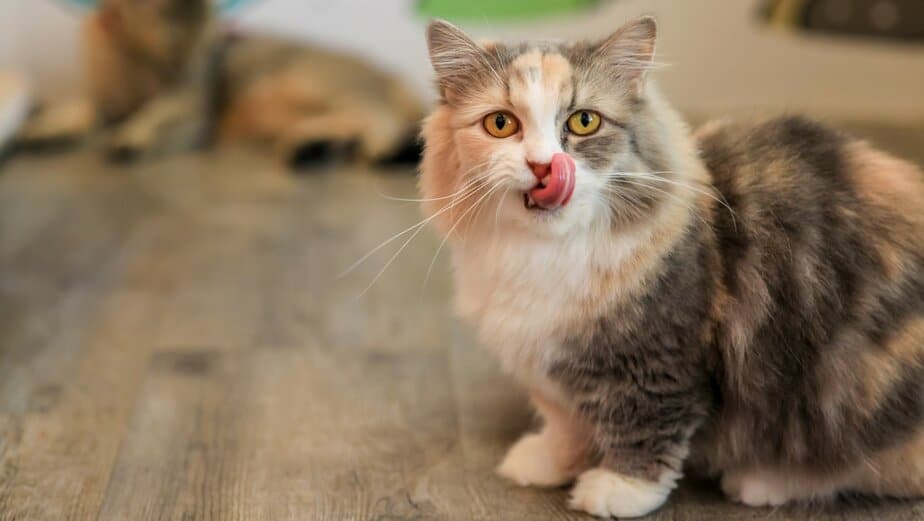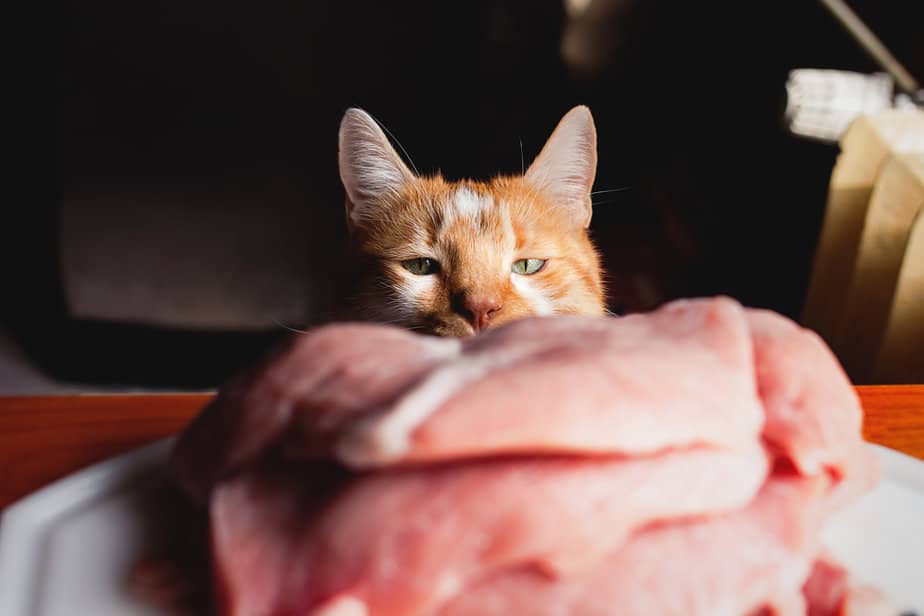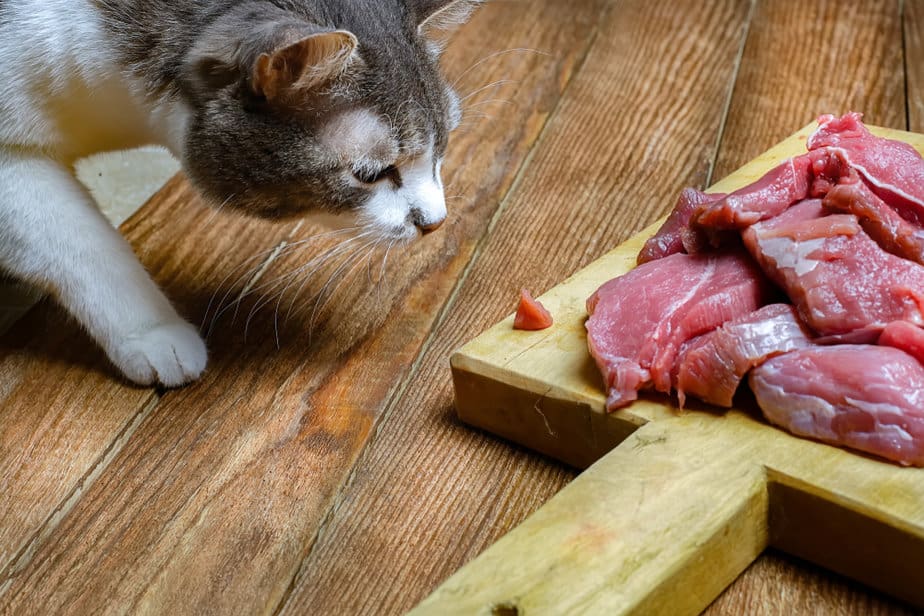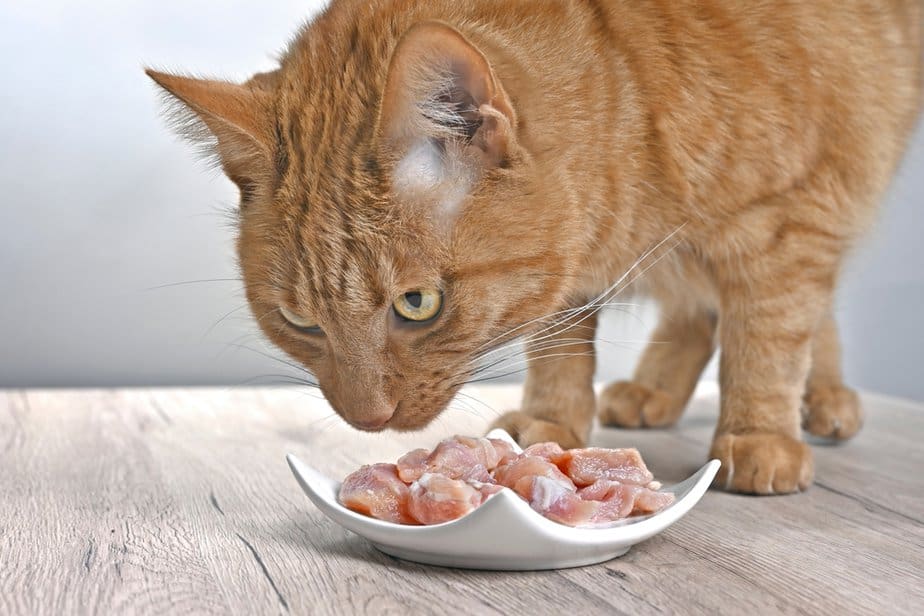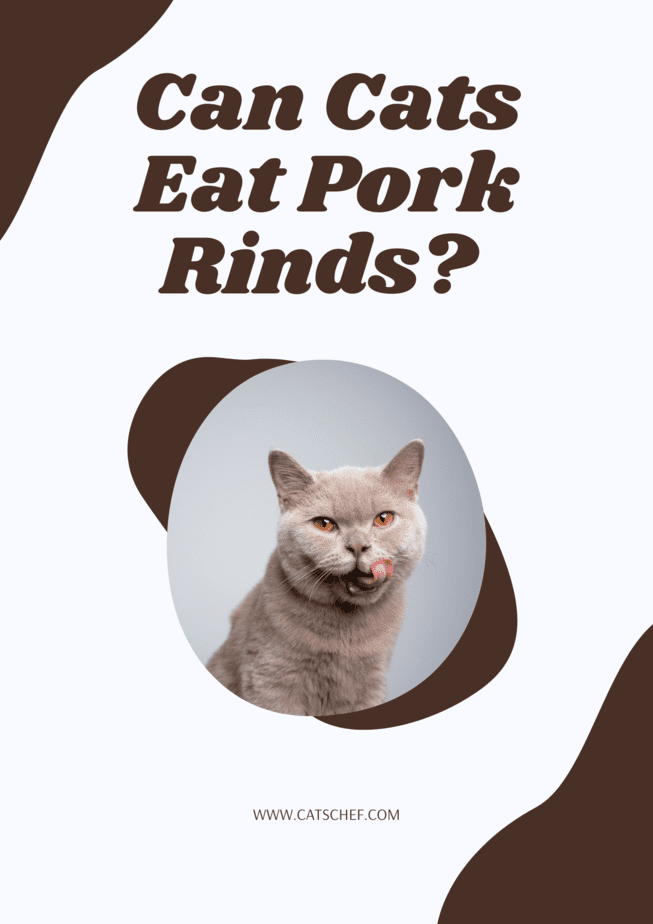📖 Table of Content:
Who doesn’t love sneaking some sort of pork product into EVERY SINGLE MEAL? Bacon makes every breakfast worth waking up for, a portion of pork belly turns your (otherwise) boring lunch into an experience, and pork rinds transform everything into a *chef’s kiss gourmet meal. But, can cats eat pork rinds?
We understand where your question comes from because, as pet parents, we often face difficult decisions. Do we tell our four-legged friends “No” and make them scrunch up their snouts and pout for the rest of the day? Or tell them “Yes” and hurt their tummies?
Who’s to say your furry friend won’t continue scoffing down everything pork-related she can get her paws on? You don’t want to open Pandora’s box and introduce her to a whole new world of cat foods and cat treats that might make her meow and purr her way into getting what she wants.
But, the cat’s out of the bag now (no pun intended). Your feline friend’s aware of the existence of one of the most mouth-watering, paw-licking pork treats out there… Yes, the one and only pork rinds that make every human’s life worth living (a bit dramatic, but you understand where we’re coming from).
Can cats eat pork rinds? Can cats eat pork, for that matter? Would cooked pork make a difference when compared to raw pork? Would pork meat, pork chops, and pork sausage make a better meal for cats than pork belly, pork skin, pork fat, and pork bones?
According to our friends over at the ASPCA (American Society for the Prevention of Cruelty to Animals), cats can eat pork. However, pork rinds might not be the best choice for her. Here’s everything you need to know to embark on your “cats versus pork rinds” journey.
What are pork rinds?
And that’s a pretty valid question when you’re not a Southerner! Trust me, the idea of turning pig skin into a snack that looks like a Doritos and Cheetos love child sounds like something straight out of a Tim Burton movie. “Can cats eat pork rinds”, more like “can humans eat pork rinds?!”
You might have guessed this beforehand, but pork rinds (or chicharrones) are pretty much pieces of pork skin playing the role of something crispy, crunchy, and commercially available. And, how exactly are pork rinds made?
First things first, the above-mentioned pieces of pork skin are simmered in boiling water. They’re then divided into smaller pieces (bite-sized, paw-sized, whichever you prefer). And they’re left to cool down for a couple of hours until the fat solidifies and becomes easier to remove.
After that, they’re placed into an oven where they’re baked for EIGHT HOURS on low heat until the moisture evaporates and they become a lot drier and crunchier.
Last but not least, they’re fried in vegetable oil, peanut oil, or even pork fat until they puff up and become nice and crispy. They’re then seasoned (while they’re still piping hot!) with salt, pepper, and other seasonings. These can include cayenne pepper, chili pepper, garlic powder, and onion powder.
That sounds… even better than bacon. Now you know what’s going into your cat’s stomach when you’re feeding her pork rinds. (Because you just don’t know how to say “No” when she gives you that look). You can scroll down to learn whether pork rinds are even worth the risk.
Do cats like pork rinds?
That’s another great question when you remember that cats are notorious for being both curious and picky about what goes into their stomachs. Pork rinds sound like a delicious snack for everyone involved, but does that include your furry friend?
Here‘s the thing, cats are obligate carnivores. That‘s a fancy way of saying that cats require a bunch of meat, animal protein, and animal-sourced vitamins and minerals in their diets to survive. They don’t require fruits, veggies, and grains the same way humans do.
They don’t even possess the enzymes necessary for their digestive systems to break down and process most foods humans eat. And, they have to spend the majority of their life on a Keto diet (talking about a skinny legend, right?!).
Pork rinds might not be the first thing your four-legged friend thinks of when she’s presented with an option of munching on meat, but… Pork rinds do (technically) seem like they belong to your cat’s natural diet.
They contain meat (kind of), they contain animal protein, and they don’t contain carbohydrates (we know how Keto humans feel about their carbs, right?).
So, there’s nothing weird about being a cat owner and thinking to yourself “might as well share some pork rinds with my chummy”. Most cats LOVE the taste and the crunch that pork rinds provide them with. But, how does consuming pork rinds affect your cat‘s health? Can cats eat pork rinds?
So, can cats eat pork rinds?
There’s no simple way of answering this question… On the one hand, pork rinds aren‘t toxic to cats and they‘re not the worst thing your cat can munch on. On the other, they do contain a bunch of fat, salt, and seasonings that can send your cat running to her litterbox.
So, feel free to take a look at how some of the things typically found in pork rinds affect your cat’s health. And give your vet a quick call (or even a visit). Trust me, feeding human foods to your four-legged friend doesn’t come without risks and side effects.
1. High-fat content
We can’t forget about the high amount of fat your furry friend might consume alongside a couple of pork rind nibbles. Pork rinds are beaming with fat and fatty acids (and not even the good kind!?) which might lead to a bunch of health problems.
Firstly, consuming large amounts of fat might leave your cat with problems such as weight gain, obesity, and diabetes. Your chunky cat might look adorable with that extra fluff. However, weight loss doesn’t come easy (as most of us have experienced it on our own skin).
On the other hand, fat can also leave your cat with high cholesterol levels, high blood pressure, and heart disease.
So, before you and your furry friend head out to the nearest Piggly Wiggly to get a “buy two get one for free” packet of pork rinds, you might want to back out of that deal. Cats can eat pork rinds, but that doesn’t mean they should.
2. High sodium content
Have you ever thrown a glance at the back of your pet food? Most cat owners don’t even realize that pet food doesn’t typically contain large quantities of salt. That’s because salt doesn’t sit well with your cat’s stomach.
Your cat can have an occasional treat with a high sodium content (such as pork rinds). But, such treats shouldn’t become a regular part of your cat’s diet. Trust me, your cat’s body doesn‘t need high sodium levels (the same way your body doesn’t, either!).
Sodium can cause a bunch of health problems (when consumed excessively). Excessive thirst and urination, weakness, lethargy, incoordination, vomiting, and diarrhea are only some of the symptoms. They all point toward your cat consuming too much sodium (or too many pork rinds!).
Can cats even eat pork rinds knowing they might experience these symptoms?!
3. Seasonings, additives, and preservatives
We can’t forget about seasonings, additives, and preservatives that make pork rinds A LOT worse for your cat’s health than they would normally be. Sure, pork rinds (or pork skin) contain a bunch of fat on their own.
But, they wouldn’t be nearly as dangerous for your cat without the garlic, chili powders, and xylitol’s of the world. To your cat’s demise, these are the ingredients that make pork rinds harmful (and even toxic).
Can cats eat pork rinds without any repercussions?
It’s impossible to say that pork rinds are 100% safe for your cat since they’re fatty, salty, and usually full of seasonings. Since you’re responsible for your feline’s health, I’m sure you don’t want to risk it so it’s always better to stay on the safe side.
However, if you choose to share a bite with your pet, then be 100% sure the type of pork rinds you’re eating doesn’t contain any of the mentioned ingredients. Also, make sure every decision you make gets the green light from your vet.
